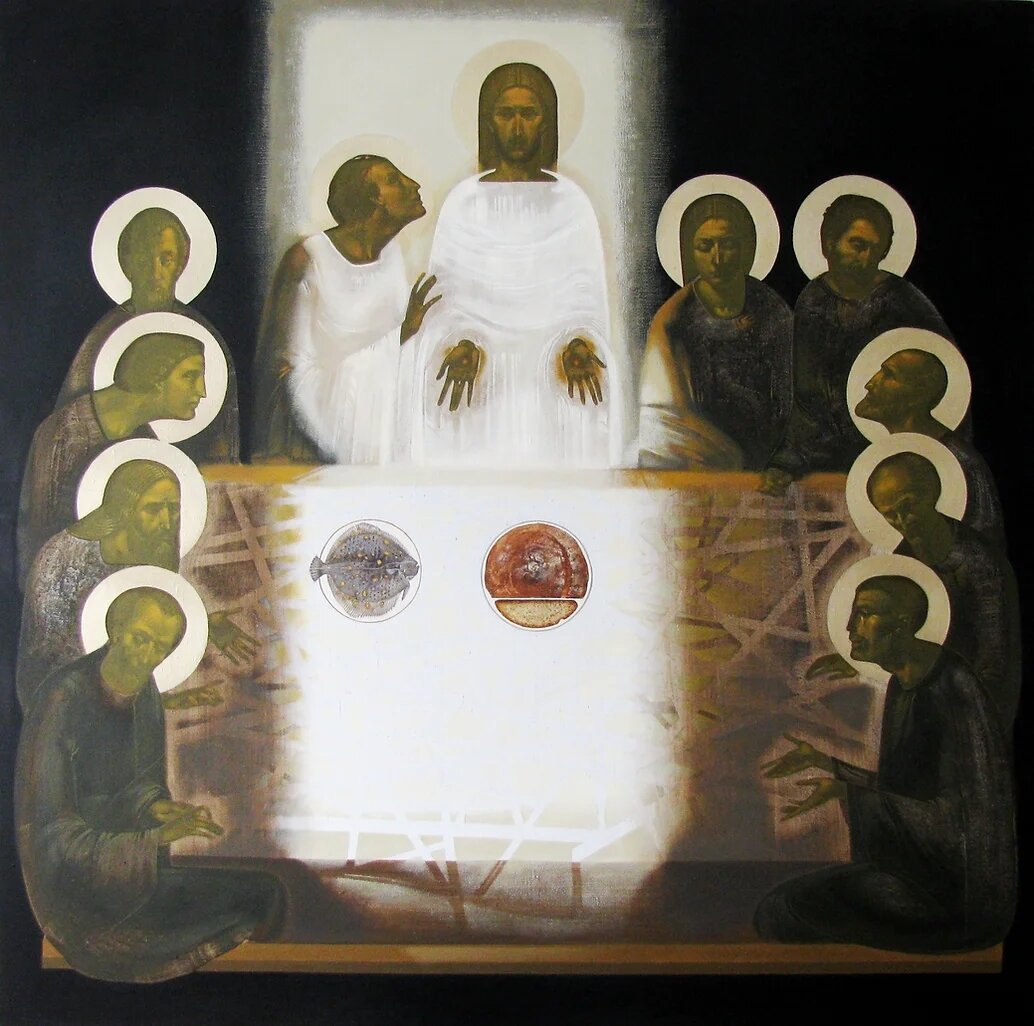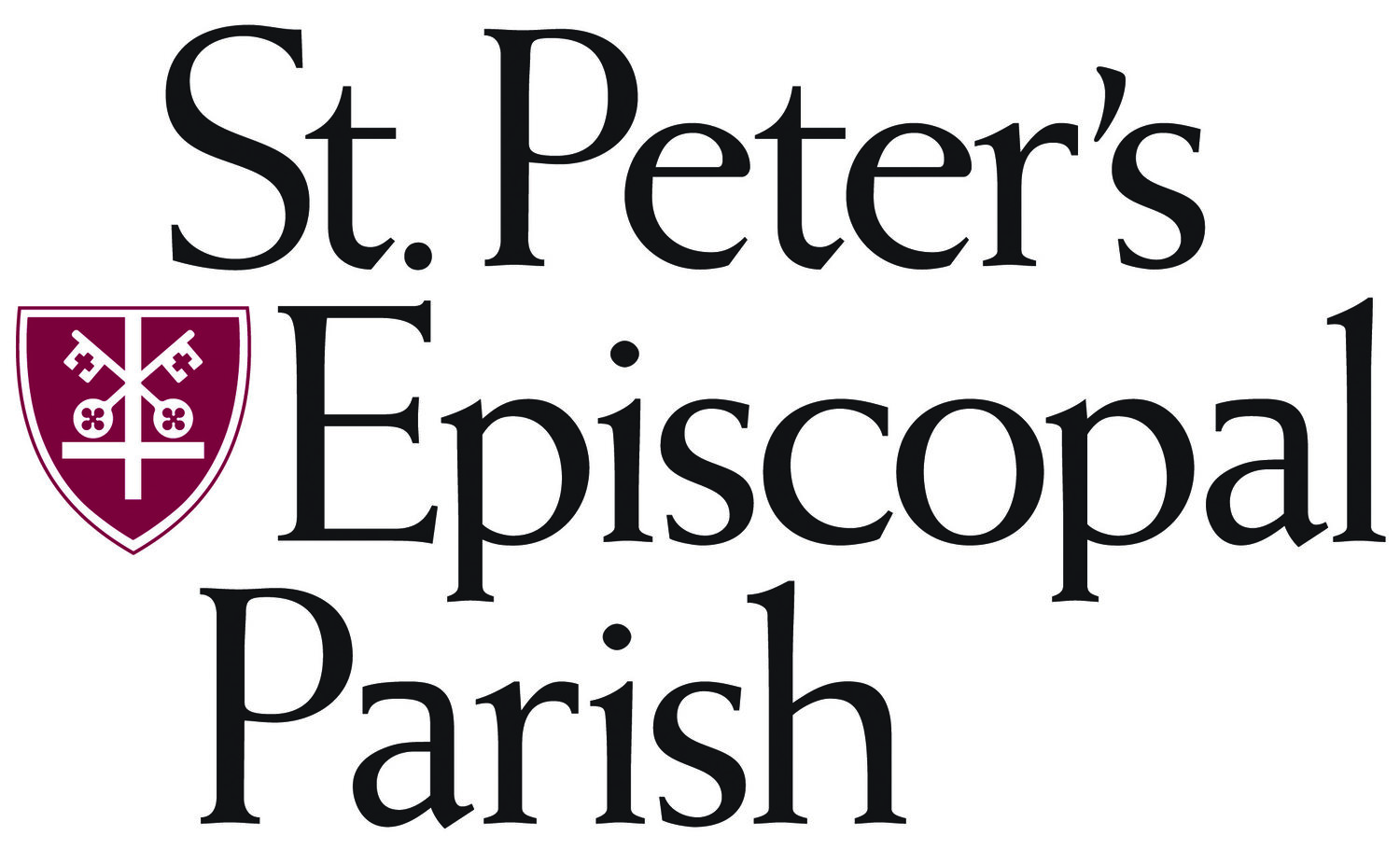A Wounded Church

Sermon for the Second Sunday of Easter
April 16, 2022
Acts 5:27-32
Psalm 118:14-29
Revelation 1:4-8
John 20: 10-31
It’s now been a week now since Easter Sunday, the day of Resurrection. Although in church our celebration of Easter is 50 days long, lasting all the way until Pentecost, the numbers of people of we had here last Sunday that were here a week ago have thinned just a little. The Easter lilies around the altar, though still beautiful, aren’t quite as fresh as they were. The hot cross buns have been eaten. And our Easter joy is perhaps a little more muted.
As Christians, followers of Jesus Christ, one of our core convictions is that the Resurrection changes everything. We believe that because of what happened to Jesus—because of the cross and the empty tomb—the world is now different. Somehow, there is the possibility for new life even in death. The thing is, though, you have to stick around for longer than Easter Sunday to really experience this new life. Because it’s only after Easter Sunday—after the dust from the Resurrection has started to settle—that we begin to realize what this new Resurrection life is going to be like.
And guess what? There are going to be some surprises. Because it turns out that life after the Resurrection isn’t business as usual. During Easter, you can say goodbye to the status quo. Things are different now.
We get a powerful glimpse of this new reality in this morning’s Gospel story from John’s Gospel. This is a story that’s about the status quo being shattered if ever there was one! It begins, after all, with the risen Jesus mysteriously passing through closed and locked doors and appearing to the disciples. And not just once, but twice.
But this isn’t even the biggest surprise—at least, not for me. There’s another one coming, and it’s this: the Risen Jesus who comes to the disciples still has his wounds. He still bears them, the wounds he received on the cross from the nails driven into his hands and feet, and the spear that punctured his side. Here Jesus has been raised from the dead—here he’s gone from being a corpse to having a living body—yet he still has these wounds.
I don’t know about you, but I would have thought that the Resurrection would mean no more wounds. That it would mean… a fresh slate. A brand new body. No more reminders of the humiliation, suffering, and defeat of Good Friday. I’dhave thought the Resurrection would mean all that is now behind Jesus. And yet, here they are, those wounds. Even the Risen Jesus carries the marks of the cross on his body. And not only does he still carry these wounds on his body, but the very first thing he does both times when he appears to the disciples in our Gospel story is to show his wounds to them. In fact, it’s the wounds that tell the disciples that it is in fact Jesus. It’s the wounds that convince them that it’s really him. That he’s real. That it’s not just some ghost or hallucination. That he has a real body. That he has really been raised to life. And of course, for Thomas, who initially doubts that Jesus has appeared to other disciples, it’s the wounds that give him the gift of his faith. It’s in seeing Jesus’ wounds—and in touching the wounds—that he comes to believe in Jesus. “My Lord and my God!” he exclaims.
This story about Jesus’ wounds has gotten me thinking about wounds this week. Physical wounds, emotional and spiritual wounds, other wounds. My own wounds. And the wounds that I know many of you carry because you have shared them with me. We all have them, don’t we? In one way or another. The wounds we’ve gotten from life.
I was also thinking this week about how, so often, we’re afraid to show our wounds. How we’re afraid to bear our wounds to one another. I mean, it’s relatively easy to show the parts of our selves where everything is ok, isn’t it? Where everything is shiny and squeaky clean. But our wounds? Well, they’re a lot harder to show, at least from my experience. Showing our wounds can feel a lot riskier. A lot more vulnerable. And so, sometimes—maybe more often than not—we keep them hidden. We pretend like we’re ok. When people ask, we smile and say, “we’re fine.”
It’s hard to show our wounds, including, sometimes, even at church. In fact, from my experience in churches, sometimes churches can make people feel like they can’t really bear their wounds. Or like they can’t really bring all of themselves to church. Like they have to hide their wounds so they’ll be presentable to God, or dress up for God. As if church were a social club where everyone has to appear happy and well-adjusted at all times.
I’ll never forget one time, in the church where I served right after being ordained, when I got an email from a parishioner who frequently served as a Eucharistic Minister on Sundays. In the email, she apologized to me for the way she had acted at the altar the previous Sunday. She said it had been the day after the anniversary of her husband’s unexpected death a few years before, leaving her and her infant daughter alone. And during the Offertory hymn, which was Amazing Grace, she lost it. I looked over, and tears were streaming down her face. In her email, she said she was really sorry that she had let this happen in church, and for being so “unprofessional” while serving.
This made me feel so sad—that anyone felt like they needed to apologize for tears in church. I wrote her back, and while I honestly don’t remember exactly what I said, I do remember thinking to myself, “Gosh, if we can’t shed tears in church—if we can’t shed tears at this altar, and can’t show one another our wounds in this community—then what’s the point of all this? Why are we even here? We might as well pack up and call it a day!
Which brings me back to our Gospel story… During this season of Easter season at church, one of the things that we remember about ourselves at church is that we are now Christ’s risen body in the world. Again and again, throughout these 50 days of Easter, we are continually reminded, as Teresa of Avila once prayed, that “Christ has no body but ours. No hands and no feet on earth by ours. Ours are the hands with which he looks compassion on the world. Ours are the feet with which he walks to do good. Ours are the hands with which he blesses the world…”
And one of the amazing things about Christ’s risen body, our Gospel story reminds us today, is that the wounds are still there. They haven’t just disappeared, and Jesus doesn’t try to hide them either. And nor should we, Christ’s risen body in the world today.
Being Christ’s Body doesn’t mean that we’re not supposed to have wounds anymore—or that we have to brush our wounds under the carpet, or pretend like we’re perfect, or like everything’s fine when it’s not. No, being Christ’s Body in the world—his risen Body—means that it’s ok to bear our wounds to one another. In fact, it’s more than ok. It’s part of how we show one another we’re real. It’s part of how we authentically share Jesus with one another, and with others.
Chances are, when people come through the front doors of this building, they’re not looking for a church full of perfect people, or yet another place where they feel like they have to pretend to be something they’re not. Chances are, they’re looking for an authentic community; a community of real people. A place where they can be themselves, wounds and all. A place where they can be real.
And here’s the thing: Part of what makes us real—as Thomas and the other disciples discovered about Jesus—is our wounds. And part of what makes us Jesus’ Risen Body in the world is our willingness to bear our wounds. And hopefully, part of what makes us church is that we can be a place where others can bear their wounds too.
As we continue our Easter celebration over these coming weeks, may we grow more and more into this kind of church. Amen.
—The Reverend Edmund Harris
Image credit: Jesus Appears to the Ten, Ivanka Demchuk
